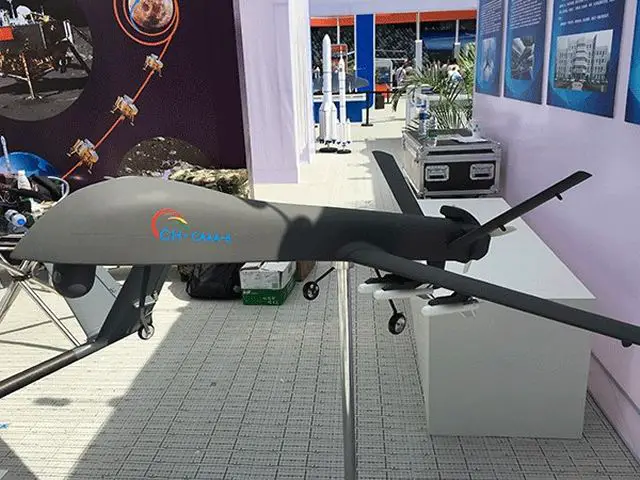China unveils its new home-made CH-5 combat and reconnaissance Drone at industry exhibition 12411153
|
|
|||
|
Military Defense Industry Technology - China CH-5 Drone
|
|||
|
|
|||
| China unveils its new home-made CH-5 combat and reconnaissance Drone at industry exhibition. | |||
|
China displayed its latest and biggest military unmanned aircraft at an industry expo that closed in Shenzhen, Guangdong province, on Friday, in an attempt to attract more buyers for its combat drones. The CH-5 combat/reconnaissance drone, developed by China Academy of Aerospace Aerodynamics under China Aerospace Science and Technology Corp, made its first flight in August, becoming the heaviest and strongest military drone in China.
|
|||
|
|
|||
 The CH-5 combat drone makes its maiden flight at an airport in northwestern China on Aug 26.(Photo/China Daily) The CH-5 combat drone makes its maiden flight at an airport in northwestern China on Aug 26.(Photo/China Daily) |
|||
|
|
|||
|
"We have sold the CH-3 to several foreign nations and now we plan to launch the export version of the CH-5 to the international market. It can perform air-to-ground strike, reconnaissance and transport operations," said Shi Wen, chief designer of the CH series at China Academy of Aerospace Aerodynamics. Compared with other military drones that usually have a maximum take-off weight of less than 1,500 kg, the CH-5 is much more powerful-it is able to fly with a weight of 3,000 kg and carry 900 kg of equipment and weapons, according to engineers at China Academy of Aerospace Aerodynamics. "The larger carrying capacity enables the CH-5 to have more reconnaissance equipment so it can detect any given target within a radius of 80 km," said Lan Wenbo, a chief engineer of the aircraft at the academy. Ou Zhongming, head of the unmanned aircraft project at the academy, said the CH-5 is large enough to host an advanced radar that can penetrate thick walls or cave to find out terrorists hiding there. Currently, ground control operators need to transfer such information to drones before launching a strike, he said. |
|||


























